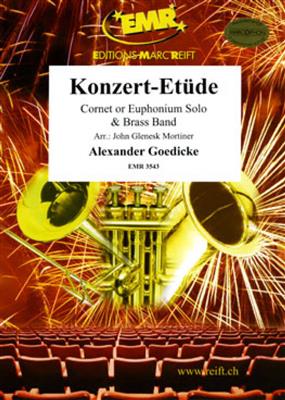We've found 777 matches for your search. Order by
Results
-
 £152.00
£152.00Eastern Dances (Bb Cornet Solo) - Bertrand Moren
Estimated dispatch 5-14 working days
-
 £132.10
£132.10Ora Doua (Cornet & Euphonium Solo) - Eddy Debons
Estimated dispatch 5-14 working days
-
 £132.10
£132.10Irish Folk (Cornet & Flugelhorn Solo) - Bertrand Moren
Estimated dispatch 5-14 working days
-
 £92.00
£92.00Trumpeter's Dream (Cornet Solo) - Norman Tailor
Estimated dispatch 5-14 working days
-
 £92.00
£92.00Concerto Pour Un Ete (Cornet Solo) - Alain Morisod
Estimated dispatch 5-14 working days
-
 £70.90
£70.90Peaceful World (Cornet Solo) - Gilles Rocha
Estimated dispatch 5-14 working days
-
 £128.50
£128.50Fiesta (Cornet Solo) - Bertrand Moren
Estimated dispatch 5-14 working days
-
 £112.90
£112.90Konzert-Etude (Bb Cornet Solo) - Alexander Goedicke
Estimated dispatch 5-14 working days
-
 £108.10
£108.10Blue Flugel (Flugelhorn or Cornet Solo) - Jérôme Naulais
Estimated dispatch 5-14 working days
-
 £108.10
£108.10Badinerie (Cornet Solo) - Johann Sebastian Bach
Estimated dispatch 5-14 working days
